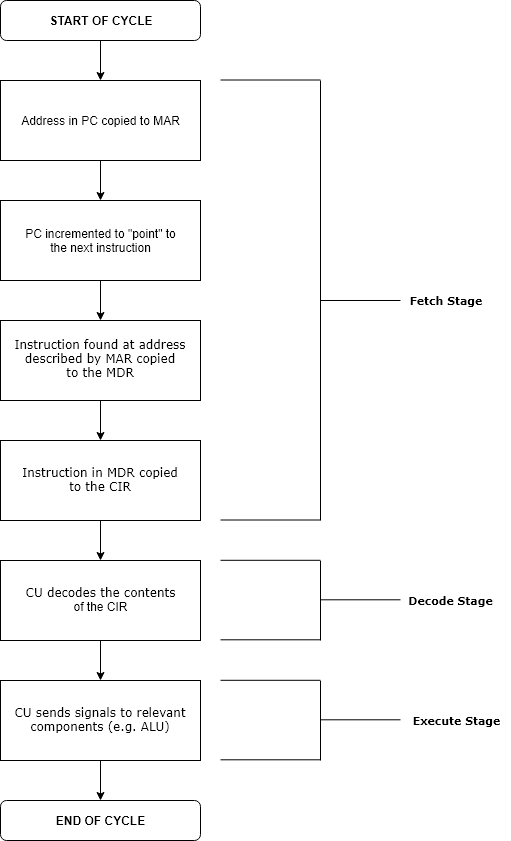|
Algorithmic Learning Theory
Algorithmic learning theory is a mathematical framework for analyzing machine learning problems and algorithms. Synonyms include formal learning theory and algorithmic inductive inference. Algorithmic learning theory is different from statistical learning theory in that it does not make use of statistical assumptions and analysis. Both algorithmic and statistical learning theory are concerned with machine learning and can thus be viewed as branches of computational learning theory. Distinguishing characteristics Unlike statistical learning theory and most statistical theory in general, algorithmic learning theory does not assume that data are random samples, that is, that data points are independent of each other. This makes the theory suitable for domains where observations are (relatively) noise-free but not random, such as language learning and automated scientific discovery. The fundamental concept of algorithmic learning theory is learning in the limit: as the number of da ... [...More Info...] [...Related Items...] OR: [Wikipedia] [Google] [Baidu] |
Machine Learning
Machine learning (ML) is a field of study in artificial intelligence concerned with the development and study of Computational statistics, statistical algorithms that can learn from data and generalise to unseen data, and thus perform Task (computing), tasks without explicit Machine code, instructions. Within a subdiscipline in machine learning, advances in the field of deep learning have allowed Neural network (machine learning), neural networks, a class of statistical algorithms, to surpass many previous machine learning approaches in performance. ML finds application in many fields, including natural language processing, computer vision, speech recognition, email filtering, agriculture, and medicine. The application of ML to business problems is known as predictive analytics. Statistics and mathematical optimisation (mathematical programming) methods comprise the foundations of machine learning. Data mining is a related field of study, focusing on exploratory data analysi ... [...More Info...] [...Related Items...] OR: [Wikipedia] [Google] [Baidu] |
Run Time (program Lifecycle Phase)
Execution in computer and software engineering is the process by which a computer or virtual machine interprets and acts on the instructions of a computer program. Each instruction of a program is a description of a particular action which must be carried out, in order for a specific problem to be solved. Execution involves repeatedly following a " fetch–decode–execute" cycle for each instruction done by the control unit. As the executing machine follows the instructions, specific effects are produced in accordance with the semantics of those instructions. Programs for a computer may be executed in a batch process without human interaction or a user may type commands in an interactive session of an interpreter. In this case, the "commands" are simply program instructions, whose execution is chained together. The term run is used almost synonymously. A related meaning of both "to run" and "to execute" refers to the specific action of a user starting (or ''launching'' o ... [...More Info...] [...Related Items...] OR: [Wikipedia] [Google] [Baidu] |
Computational Learning Theory
In computer science, computational learning theory (or just learning theory) is a subfield of artificial intelligence devoted to studying the design and analysis of machine learning algorithms. Overview Theoretical results in machine learning mainly deal with a type of inductive learning called supervised learning. In supervised learning, an algorithm is given samples that are labeled in some useful way. For example, the samples might be descriptions of mushrooms, and the labels could be whether or not the mushrooms are edible. The algorithm takes these previously labeled samples and uses them to induce a classifier. This classifier is a function that assigns labels to samples, including samples that have not been seen previously by the algorithm. The goal of the supervised learning algorithm is to optimize some measure of performance such as minimizing the number of mistakes made on new samples. In addition to performance bounds, computational learning theory studies the ... [...More Info...] [...Related Items...] OR: [Wikipedia] [Google] [Baidu] |
Sample Exclusion Dimension
In computational learning theory, sample exclusion dimensions arise in the study of exact concept learning with queries. In algorithmic learning theory, a ''concept'' over a domain ''X'' is a Boolean function In mathematics, a Boolean function is a function whose arguments and result assume values from a two-element set (usually , or ). Alternative names are switching function, used especially in older computer science literature, and truth functi ... over ''X''. Here we only consider finite domains. A ''partial approximation'' ''S'' of a concept ''c'' is a Boolean function over Y\subseteq X such that ''c'' is an extension to ''S''. Let ''C'' be a class of concepts and ''c'' be a concept (not necessarily in ''C''). Then a ''specifying set'' for c w.r.t. ''C'', denoted by ''S'' is a partial approximation ''S'' of ''c'' such that ''C'' contains at most one extension to ''S''. If we have observed a specifying set for some concept w.r.t. ''C'', then we have enough information t ... [...More Info...] [...Related Items...] OR: [Wikipedia] [Google] [Baidu] |
Formal Epistemology
Formal epistemology uses formal methods from decision theory, logic, probability theory and computability theory to model and reason about issues of epistemological interest. Work in this area spans several academic fields, including philosophy, computer science, economics, and statistics. The focus of formal epistemology has tended to differ somewhat from that of traditional epistemology, with topics like uncertainty, induction, and belief revision garnering more attention than the analysis of knowledge, skepticism, and issues with justification. Formal epistemology extenuates into formal language theory. History Though formally oriented epistemologists have been laboring since the emergence of formal logic and probability theory (if not earlier), only recently have they been organized under a common disciplinary title. This gain in popularity may be attributed to the organization of yearly Formal Epistemology Workshops by Branden Fitelson and Sahotra Sarkar, starting in 2004, a ... [...More Info...] [...Related Items...] OR: [Wikipedia] [Google] [Baidu] |
Singapore
Singapore, officially the Republic of Singapore, is an island country and city-state in Southeast Asia. The country's territory comprises one main island, 63 satellite islands and islets, and one outlying islet. It is about one degree of latitude () north of the equator, off the southern tip of the Malay Peninsula, bordering the Strait of Malacca to the west, the Singapore Strait to the south along with the Riau Islands in Indonesia, the South China Sea to the east, and the Straits of Johor along with the State of Johor in Malaysia to the north. In its early history, Singapore was a maritime emporium known as '' Temasek''; subsequently, it was part of a major constituent part of several successive thalassocratic empires. Its contemporary era began in 1819, when Stamford Raffles established Singapore as an entrepôt trading post of the British Empire. In 1867, Singapore came under the direct control of Britain as part of the Straits Settlements. During World ... [...More Info...] [...Related Items...] OR: [Wikipedia] [Google] [Baidu] |
Springer Science+Business Media
Springer Science+Business Media, commonly known as Springer, is a German multinational publishing company of books, e-books and peer-reviewed journals in science, humanities, technical and medical (STM) publishing. Originally founded in 1842 in Berlin, it expanded internationally in the 1960s, and through mergers in the 1990s and a sale to venture capitalists it fused with Wolters Kluwer and eventually became part of Springer Nature in 2015. Springer has major offices in Berlin, Heidelberg, Dordrecht, and New York City. History Julius Springer founded Springer-Verlag in Berlin in 1842 and his son Ferdinand Springer grew it from a small firm of 4 employees into Germany's then second-largest academic publisher with 65 staff in 1872.Chronology ". Springer Science+Business Media. In 1964, Springer expanded its business internationally, op ... [...More Info...] [...Related Items...] OR: [Wikipedia] [Google] [Baidu] |
LNCS
''Lecture Notes in Computer Science'' is a series of computer science books published by Springer Science+Business Media since 1973. Overview The series contains proceedings, post-proceedings, monographs, and Festschrifts. In addition, tutorials, state-of-the-art surveys, and "hot topics" are increasingly being included. The series is indexed by DBLP. See also *'' Monographiae Biologicae'', another monograph series published by Springer Science+Business Media *''Lecture Notes in Physics'' *'' Lecture Notes in Mathematics'' *'' Electronic Workshops in Computing'', published by the British Computer Society image:Maurice Vincent Wilkes 1980 (3).jpg, Sir Maurice Wilkes served as the first President of BCS in 1957. The British Computer Society (BCS), branded BCS, The Chartered Institute for IT, since 2009, is a professional body and a learned ... References External links * Academic journals established in 1973 Computer science books Series of non-fiction books ... [...More Info...] [...Related Items...] OR: [Wikipedia] [Google] [Baidu] |
Hokkaido University
, or , is a public research university in Sapporo, Hokkaido, Japan. Founded in 1918, it is the fifth-oldest government-authorised university in Japan and one of the former Imperial Universities. The university finds its roots in Sapporo Agricultural College, which was a pioneer in the country's modern agricultural education and research, founded in 1876. The university's motto is 'Boys, Be Ambitious', which is said to be the parting words of the American dean of the Agricultural College, William S. Clark. The university has 12 undergraduate faculties and 21 postgraduate schools. The university mainly operates on two campuses: the main campus is located in downtown Sapporo, just north of Sapporo Station, and the other campus is located in Hakodate, primarily used by the Faculty of Fishery Sciences. History The history of the university dates to the formal incorporation of Yezo as Hokkaido into the Japanese realm. Director of the Hokkaidō Development Commission Kuroda Kiy ... [...More Info...] [...Related Items...] OR: [Wikipedia] [Google] [Baidu] |
Occam’s Razor
In philosophy, Occam's razor (also spelled Ockham's razor or Ocham's razor; ) is the problem-solving principle that recommends searching for explanations constructed with the smallest possible set of elements. It is also known as the principle of parsimony or the law of parsimony (). Attributed to William of Ockham, a 14th-century English philosopher and theologian, it is frequently cited as , which translates as "Entities must not be multiplied beyond necessity", although Occam never used these exact words. Popularly, the principle is sometimes paraphrased as "of two competing theories, the simpler explanation of an entity is to be preferred." This philosophical razor advocates that when presented with competing hypotheses about the same prediction and both hypotheses have equal explanatory power, one should prefer the hypothesis that requires the fewest assumptions, and that this is not meant to be a way of choosing between hypotheses that make different predictions. Similarly ... [...More Info...] [...Related Items...] OR: [Wikipedia] [Google] [Baidu] |
Winnow Algorithm
The winnow algorithm Nick Littlestone (1988). "Learning Quickly When Irrelevant Attributes Abound: A New Linear-threshold Algorithm" ''Machine Learning'' 285–318(2) is a technique from machine learning for learning a linear classifier from labeled examples. It is very similar to the perceptron algorithm. However, the perceptron algorithm uses an additive weight-update scheme, while Winnow uses a multiplicative scheme that allows it to perform much better when many dimensions are irrelevant (hence its name winnow). It is a simple algorithm that scales well to high-dimensional data. During training, Winnow is shown a sequence of positive and negative examples. From these it learns a decision hyperplane that can then be used to label novel examples as positive or negative. The algorithm can also be used in the online learning setting, where the learning and the classification phase are not clearly separated. Algorithm The basic algorithm, Winnow1, is as follows. The instance s ... [...More Info...] [...Related Items...] OR: [Wikipedia] [Google] [Baidu] |


